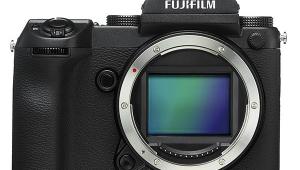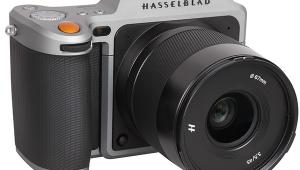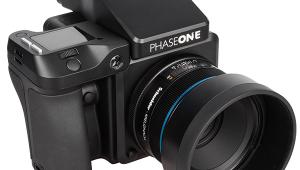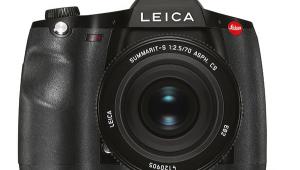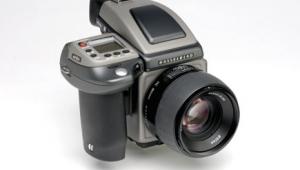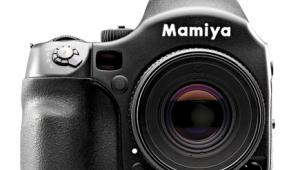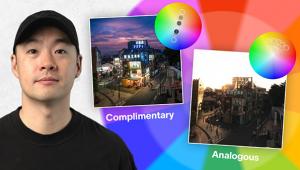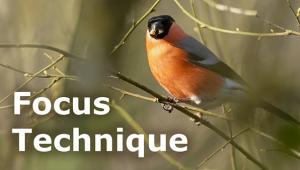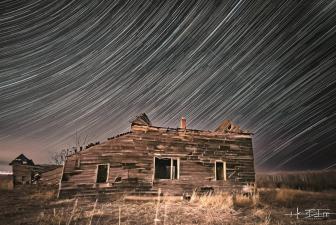Large Format Lensless Photography; A Do-It-Yourself Project (And No Camera Was Harmed During This Story!)
As we journey further into cyberspace, it is inevitable that the oldest of methods for forming an image has found resurgence. Pinhole photography can be both fun and a serious pursuit. Notice the introduction of make-your-own pinhole camera kits as well as manufactured cameras for small and large formats. There is a published journal devoted to the craft and several websites offering advice and products. I was bitten by the bug and soon found myself wanting to make "lensless" photographs.
I was interested in exploring pinhole photography but also wanted an inexpensive extreme wide angle camera for black and white photography. Could I have a camera that could do both? My first consideration is that pinhole images do not enlarge well and that means large format film for contact printing. The 5x7" format, almost twice the size of 4x5 and with a longer aspect ratio (1:4 length to height ratio) appealed to me as a better wide angle format than 4x5 or 8x10 (both 1:25). In addition, a 5x7 camera would be smaller and lighter in weight than an 8x10, the next larger size.
|
Church At San Ysidro, New Mexico
|
|
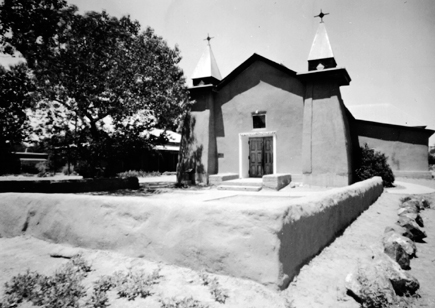 |
|
|
That decided, I chose to build the camera around a vintage 45¼16" f/12.5 Wollensak Series IIIa Extreme Wide Angle lens, an inexpensive (mine cost $40) wide angle modified Protar formula. For simplicity sake, this was going to be a fixed focus camera with the lens set up to be pre-focused at 25 ft, which is the hyperfocal distance at the typical working aperture of f/22. As a result, everything from 12.5 ft to infinity would have acceptable sharpness. This also would place the 45/16" lens at 112mm from the film plane (see references for hyperfocal distance and focus shift formulas) which is important because the pinhole minimum focal length which covers 5x7 with optimal definition is 112mm (see the references for the technical explanations).
Not wanting to build a camera completely from scratch, I found a 5x7 Burke & James view camera body and back with ground glass and lensboard, all separately sourced from the usual sources, camera stores and eBay. Now, before anyone gets a burr under their saddle, no camera part was irreparably harmed or sacrificed during the course of this project; all camera parts utilized can, if desired, be returned to their originally intended function.
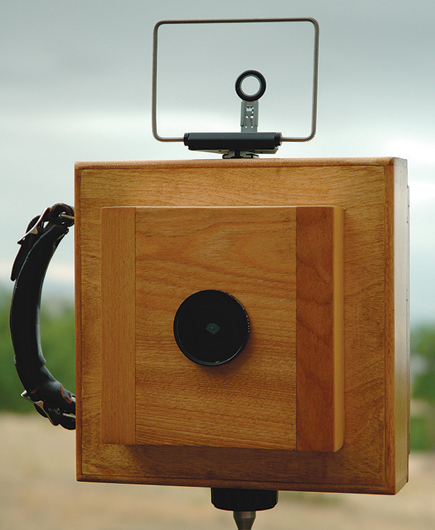 |
|
|
I placed a flat plywood panel over the front of the body and, needing additional extension, built a wood box centered on that panel using the lensboard. The distance from the ground glass to the center of the lens was constructed to be 112mm, where the 45/16" Wollensak lens would be focused at 25 ft and where a pinhole would fully cover the 5x7 format. I inserted a tripod bushing in the bottom of the camera body and attached on top an accessory shoe to hold a Graflex wide angle frame finder as a guide for composition.
I constructed the pinhole using silver foil (purchased off eBay) by poking with an appropriate sized sewing needle, filed off the rough edges, toned it in selenium to darken and ascertained I had the correct size (approximately 0.45mm) with a micrometer scale under a microscope. The finished pinhole was taped to a metal series 6 adapter which screws into the mounting flange of the Wollensak lens. This allows me to easily switch between the pinhole and the lens, which have the same angle of view (90Þ). I use a plastic slip-on lens cap for the pinhole shutter (makes one feel really "vintage") since my exposures at f/250, even in bright Colorado and New Mexico sunshine, can take a few seconds. Putting all the parts together cost approximately $100, plus a few hours equity labor. A tripod and some 5x7 sheet film holders, the latter available quite cheaply these days, complete the outfit.
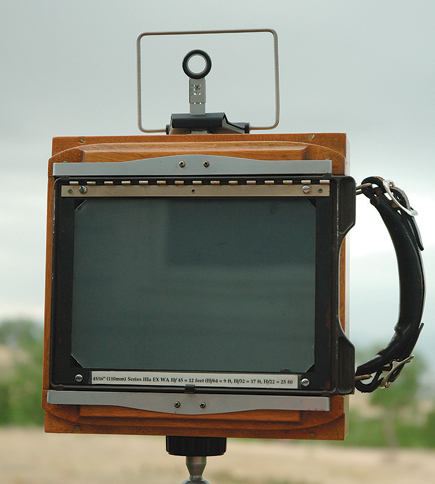 |
|
|
The difference between lens and pinhole photography s fun to explore. The Wollensak lens renders a vintage look; crisp definition with low contrast that prints great on warm-toned paper. The pinhole gives that appealing, soft definition which goes on forever (unlimited depth of field). I've played around with contact printing black and white negatives on Azo paper, some color (film and photo oils), and anticipate soon a foray into the alternative world of platinum/palladium. How much fun can you have going lensless?
- Log in or register to post comments


